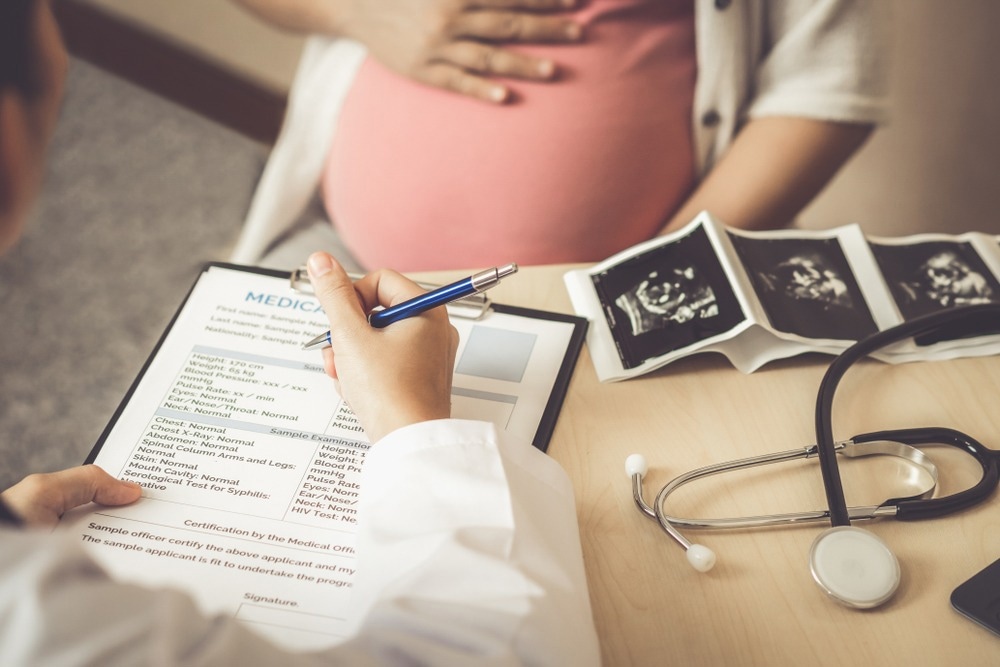In a recent study published in Nature Communications, researchers assessed the impact of the gut microbiome on the host's bile acid metabolism and intrahepatic cholestasis of pregnancy (ICP).

Background
Recent investigations utilizing 16S ribosomal ribonucleic acid (rRNA) sequencing have shown that ICP patients have distinct gut microbiota profiles compared to healthy controls. However, there is little information to assess whether changes in gut microbiota result from disease or ICP development. Particularly unknown are the gut microbiota species implicated and the underlying mechanism using which gut microbiota influence ICP development.
About the study
In the present study, researchers determined whether ICP is linked with a distinct gut microbiome profile and elucidated the function of the gut microbiota in the pathogenesis of ICP.
A total of 41 pregnant women with ICP and age- and body-mass index (BMI)-matched pregnant controls were recruited. The team performed whole-genome shotgun sequencing on feces samples obtained from healthy pregnant women and ICP patients. A metagenomic dataset was collected including a mean of 40,420,272±3,544,978 paired-end reads per sample. Human DNA and low-quality sequences were eliminated from the raw data, removing 5.26% of the readings. Eventually, 40,422,272 ± 3,544,978 readings were acquired per sample. The sequences were further analyzed.
To examine the involvement of the gut microbiome in ICP patients, stool samples collected from healthy controls and ICP patients were transplanted into mice. In addition, the team collected feces from mice inoculated with ICP stool transplants and mice inoculated with healthy donor stool transplants. In addition, the microbial species related to ICP parameters were determined, and distinct patterns were identified in bacterial taxa present in the two groups.
Results
The team chose 904 clades, which included 12 phyla, 23 classes, 37 orders, 73 families, 192 genera, and 567 species. The gut microbiome of ICP stool-transplanted mice was significantly different from that of control mice. In comparison to mice transplanted with healthy pregnant women stool samples, mice receiving ICP stool transplants had elevated aspartate transaminase (AST), total bile acid (TBA), alkaline phosphatase (ALP), alanine aminotransferase (ALT), and gamma-glutamyl transpeptidase (GGT) levels.
The hepatic tissue of mice transplanted with stool from healthy controls displayed normal morphology, while hepatic tissues of mice transplanted with stool transplants from ICP patients exhibited cytoplasmic rarefaction, vacuolar degeneration, portal oedema, nuclear condensation, and reduction of hepatic structure within periportal areas.
The number of live pups, placental weight, and fetal weight were considerably reduced in mice that received stool transplants from ICP patients while the percentage of dead fetuses was greater in these mice than in mice that received stool transplants from healthy women. This indicated that transplanting microbiota from ICP patients to mice could transmit ICP-related characteristics.
Although the team found no significant differences in alpha and beta diversity among the mild and severe groups, the microbiomes of severe ICP patients were dominated by Bacteriodes fragilis (B. fragilis). The abundance of B. fragilis in the severe group was significantly higher than in the mild group. Furthermore, B. fragilis was connected positively with the TBA, AST, and ALT levels but negatively with gestational age, newborn weight, and Apgar score.
B. fragilis was found to increase total serum bile acid levels. Also, B. fragilis colonization of mice dramatically elevated hepatic bile acid levels. The hepatic proportions of T-ɑMCA, T-βMCA, and TCA were considerably raised in mice colonized with B. fragilis.
Importantly, B. fragilis induced a considerable rise in the serum level of 7-hydroxy-4-cholesten-3-one, a marker of bile acid production. Also, the team found that the elevated conjugated bile acids caused by B. fragilis colonization could trigger sphingosine-1-phosphate receptor 2 (S1PR2) and enhance hepatic inflammation.
Fibroblast growth factor (FGF)-15 levels in the serum samples of mice transplanted with ICP samples were significantly reduced. Furthermore, the farnesoid X receptor (FXR) downstream genes expression levels were significantly reduced in the liver and ileum of ICP microbiota-transplanted mice, indicating that hepatic and intestinal FXR signaling were suppressed by the transplantation of ICP gut microbiota. GW4064, a general FXR agonist, nearly fully restored the decreased expression of FXR target genes in intestinal and hepatic tissues.
Conclusion
The study findings showed that the prevalence of B. fragilis was significantly elevated in ICP patients. B. fragilis colonization may inhibit FXR signaling by modulating bile acid metabolism, resulting in increased bile acid production and perturbed bile acid excretion. This indicated the possible significance of the gut microbiota-bile acidFXR axis in ICP development.
https://news.google.com/rss/articles/CBMihAFodHRwczovL3d3dy5uZXdzLW1lZGljYWwubmV0L25ld3MvMjAyMzAzMTQvRGlzdGluY3QtbWljcm9iaWFsLXByb2ZpbGUtcHJlc2VudC1pbi1pbnRyYWhlcGF0aWMtY2hvbGVzdGFzaXMtb2YtcHJlZ25hbmN5LXBhdGllbnRzLmFzcHjSAYgBaHR0cHM6Ly93d3cubmV3cy1tZWRpY2FsLm5ldC9hbXAvbmV3cy8yMDIzMDMxNC9EaXN0aW5jdC1taWNyb2JpYWwtcHJvZmlsZS1wcmVzZW50LWluLWludHJhaGVwYXRpYy1jaG9sZXN0YXNpcy1vZi1wcmVnbmFuY3ktcGF0aWVudHMuYXNweA?oc=5
2023-03-14 10:53:00Z
CBMihAFodHRwczovL3d3dy5uZXdzLW1lZGljYWwubmV0L25ld3MvMjAyMzAzMTQvRGlzdGluY3QtbWljcm9iaWFsLXByb2ZpbGUtcHJlc2VudC1pbi1pbnRyYWhlcGF0aWMtY2hvbGVzdGFzaXMtb2YtcHJlZ25hbmN5LXBhdGllbnRzLmFzcHjSAYgBaHR0cHM6Ly93d3cubmV3cy1tZWRpY2FsLm5ldC9hbXAvbmV3cy8yMDIzMDMxNC9EaXN0aW5jdC1taWNyb2JpYWwtcHJvZmlsZS1wcmVzZW50LWluLWludHJhaGVwYXRpYy1jaG9sZXN0YXNpcy1vZi1wcmVnbmFuY3ktcGF0aWVudHMuYXNweA
Bagikan Berita Ini














0 Response to "Distinct microbial profile present in intrahepatic cholestasis of pregnancy patients - News-Medical.Net"
Post a Comment